The Board of Audit and Inspection of Korea and its Audit of Railroad Buckling Correlated with Rising Temperatures and Climate Change
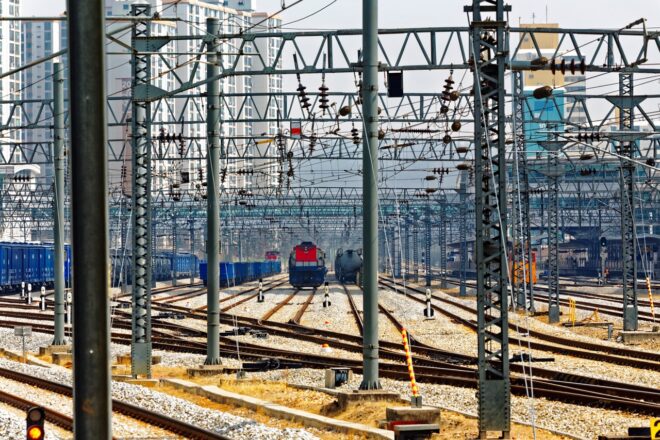
Authors: Mr. CHOE Hyun-joon, Inspector General, Mr. KIM Sang-hye, Senior Auditor, Ms. JEON Ju-won, Auditor
1. Introduction
The Board of Audit and Inspection (BAI) conducted an audit of the Korea National Railway (KORAIL) to prepare it for possible buckling of railways that may be caused by intense heat waves, the fingerprint of global warming. It seemed worthwhile to share the audit methodologies employed in this audit with INTOSAI members and the public sector auditing community, notably as the methodologies utilized the scientific analysis of the correlation between temperatures of air and railroads, as well as the simulation of future temperature scenarios.
2. Background
Since 2000, there have been a total of six cases of train derailment or technical issues with railways in South Korea, all of which had occurred on the tracks of continuously welded rail. It was found that those calamities had been caused by an intense spike of railroad temperature, which triggered buckling of railways of welded tracks.
Against this background, it became necessary to establish a standard for installing continuously welded railroads, which takes into consideration anticipated temperature changes in the future, as to prevent railroad buckling and train derailment accidents, amongst other risks.
3. Method of Analysis and its results
A. Analysis of forecasts of future air temperatures
BAI analyzed data on air temperatures under the scenarios of shared socioeconomic pathway (SSP) SSP1-2.6 and SSP5-8.5(1), which are climate change scenarios of projected socioeconomic global changes as forecasted in the Sixth Evaluation Report of the Intergovernmental Panel on Climate Change of the United Nations to calculate recurrence intervals of temperatures, or the probabilities of actually experiencing the anticipated temperatures, under the anticipated scenarios. BAI then checked them against the current status quo.
BAI found that the probability of the air temperature reaching 40℃ or hotter (equivalent to a railroad temperature 60℃ or hotter) would be 25.1 times higher in 2040 than that of present under the SSP5-8.5 scenario, as shown in Table 1.
Table 1: Comparison of probability of air temperature reaching 40℃ or hotter (Unit: %, year, no. of multiplication)
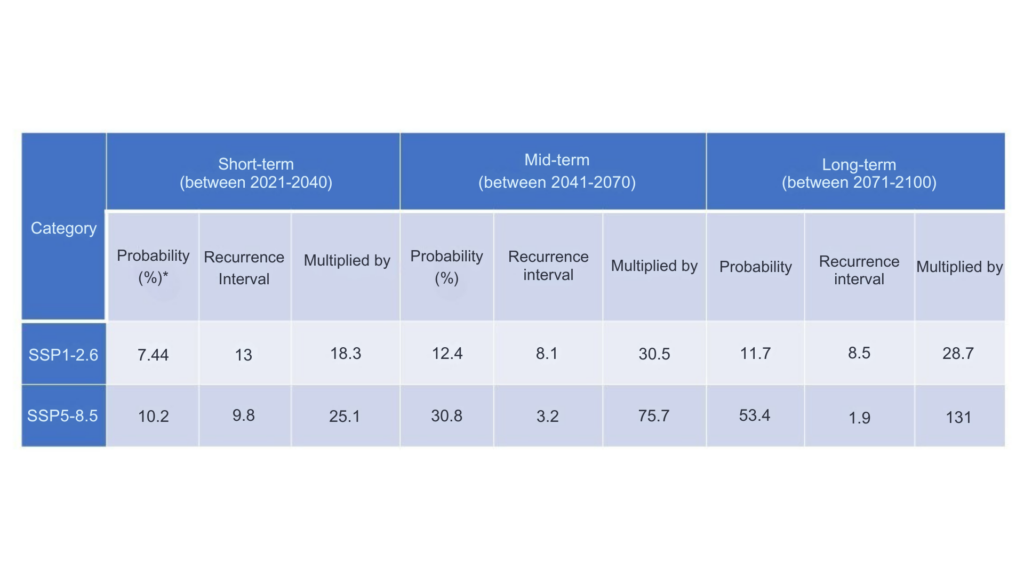
Source: Data provided by the Korea Meteorological Administration, and the analysis conducted by Kangwon National University
This analysis demonstrated that climate changes will make an impact such that the number of days where the railroad temperature reaches 60℃ or higher within the long-term scenario (2071-2100) will account for up to 30.2% of entire days of summer season, under the scenario of SSP5-8.5.
Table 2: Forecast of the number of days with railway temperature reaching 60℃ or higher during summer (between July and September) (Unit: no. of days, %)
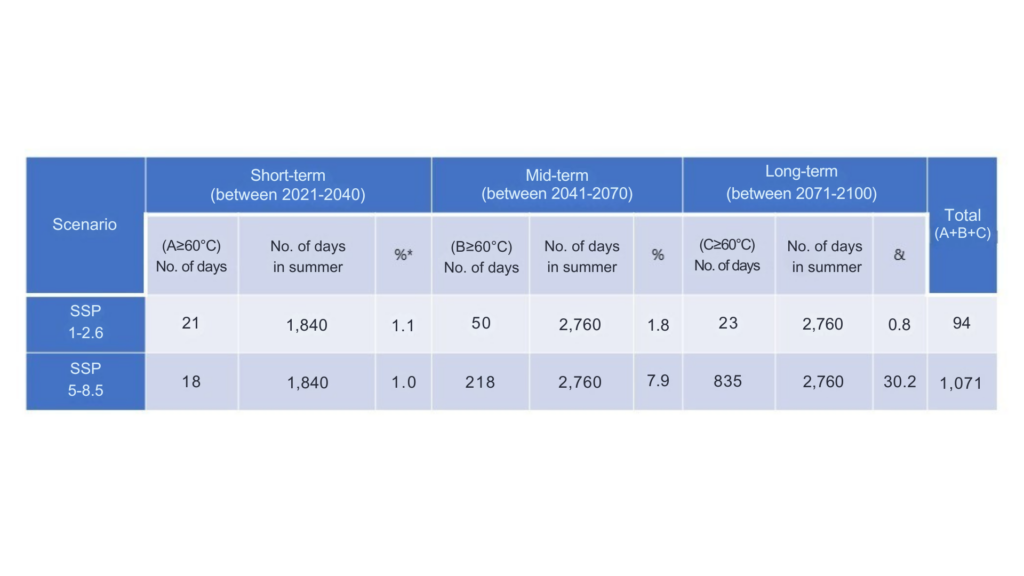
Source: Data provided by the Korea Meteorological Administration, and the analysis conducted by Kangwon National University
B. Analysis of the correlation between the temperatures of air and railroads in Korea
With a view to anticipating railroad temperatures of the future, BAI, as shown in Table 3, analyzed the correlation between the temperatures of air and railroads, using actual data of railroad temperatures. Then, it compared the correlation against extant four correlational equations of air temperature and railroad temperature, and found that the equation being used by KORAIL was the most reliable of the four.
Table 3: Simulation of the correlation between the temperatures of air and railroads
| Conducted by and during: Kangwon National University, April – June, 2023 Scope of analysis: correlation between the temperatures of air and railroad Methodology of analysis: Analysis of the correlation between the temperatures of air and railroad based on the data on air temperatures as well as the railroad temperature measured by railroad thermal scanner; Comparison of extant correlational equations of temperatures of air and railroad, one of which was being employed by the KORAIL; and Formulation of a final correlational equation of temperatures between air and railroad. |
Graph 1: Comparison of correlational equations of temperatures between air and railroads
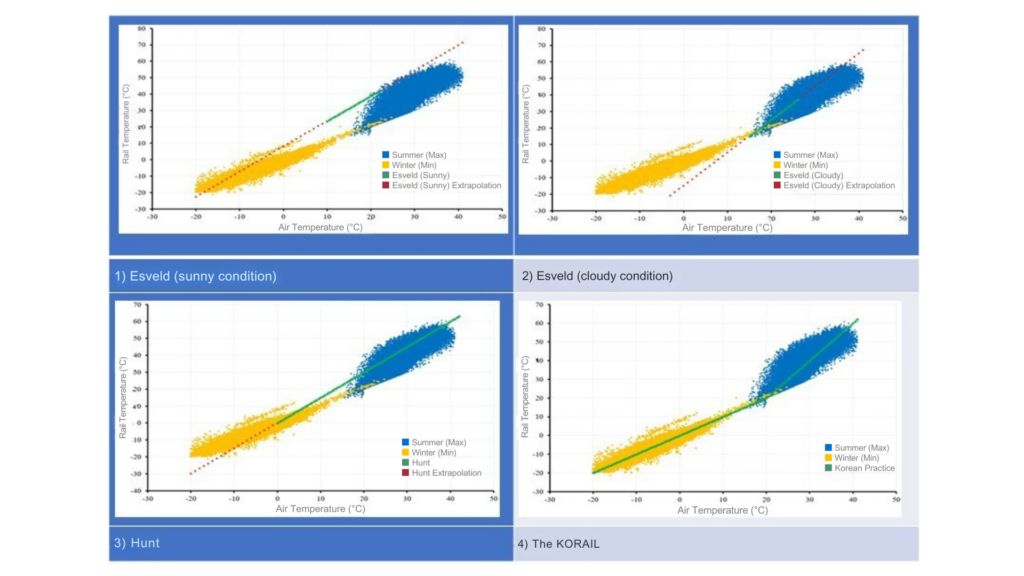
Source: Data analysis by Kangwon National University
C. Analysis of changes in railroad temperatures conducted through climate change scenarios
In close cooperation with Chungnam National University and Kangwon National University, BAI conducted simulation of converting air temperatures of the future into the range of possible future railroad temperatures, utilizing the above-explained correlational equation used by the KORAIL, as shown in Table 4.
Table 4: Simulation of changes in railroad temperatures of the future caused by climate change
| Conducted by and during: Chungnam National University, April – July Scope of analysis: Changes in range of temperature, mean temperature, and set temperature of railroads Methodology of analysis: Conversion of anticipated air temperature of the future into that of railroads, considering the recurrence probability of the anticipated future air temperature under the scenario of SSP1-2.6 and 5-8.5; and Analysis of the changes in mean temperature as well as set temperatures Limits of analysis: Railroad temperatures are to fluctuate depending on air temperature, humidity, cloud amount, etc. Nonetheless, this audit took only air temperature into consideration. |
This analysis demonstrated that the current range of railroad temperatures, which is 80℃ (minus 20 – 60℃), will expand by at least 3℃ (during the recurrence interval of 50 years, under the scenario SSP1-2.6) or 11.7℃ at the most (during the recurrence interval of 100 years, under the scenario SSP5-8.5).
Table 5: Outlook of changes in railroad temperature under SSP scenarios (Unit: ℃)
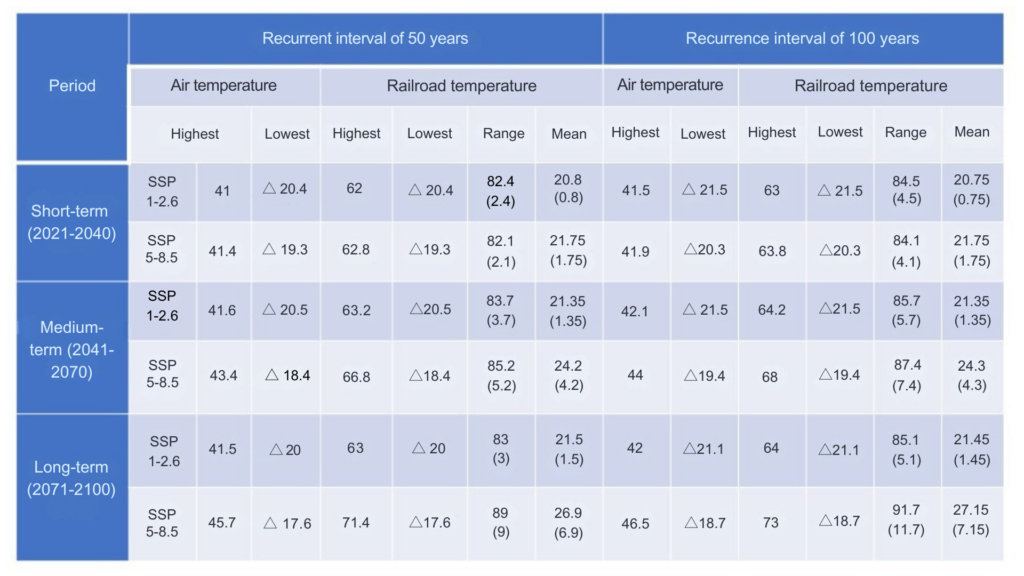
The numbers in parenthesis shows the changes in the railroad temperatures and mean temperatures, compared to that of present levels (maximum 80℃, median value 20℃)
Source: Data analyzed by Kangwon National University
D. Analysis of the probability of railroad buckling of high-speed trains, using scenarios of climate change
BAI analyzed how much the probability of railroad buckling would increase when railroad temperature rises as indicated in Table 5. The result showed that the probability of railroad buckling will reach up to 0.2% during 2071-2100 (long-term) as shown in Table 6, with railroad temperatures increasing up to 73℃ (recurrence interval of 100 years applied under the scenario of SSP5-8.5). This found that the current safety standard for railroad buckling is not sufficient enough to prepare for future climate change.
Table 6: Outlook of probability of railroad buckling under the scenario of SSP (Unit: ℃, %, No. of multiplication)
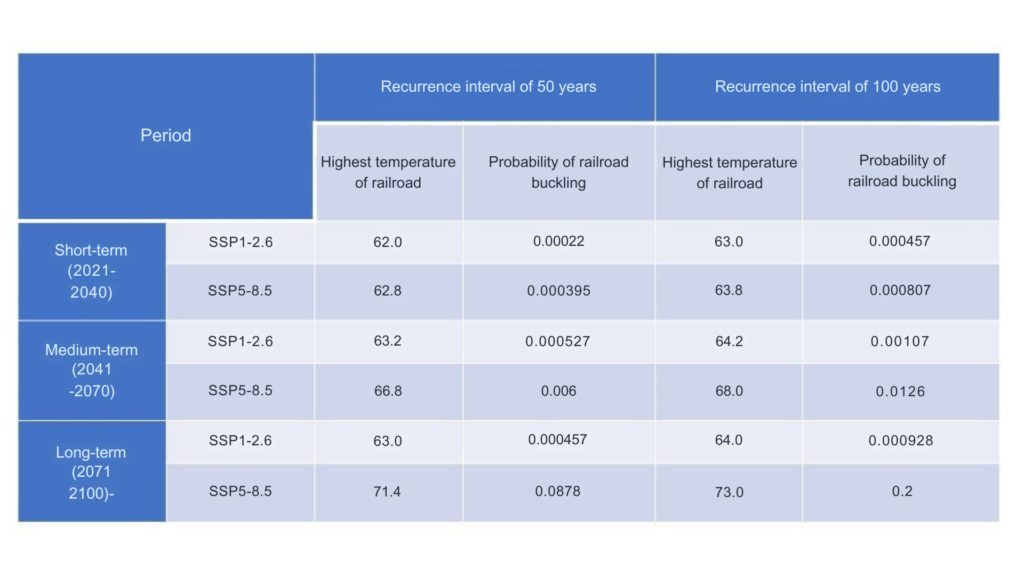
Source: Data analyzed by Chungnam National University
4. Audit Result
BAI requested the Chairman of the Korea National Railway to reinforce the safety of its railways by establishing standards for the range and target of railroad temperatures on the tracks of continuously welded railroads, using scenarios of climate change, in order to reduce the risk of railroad buckling that may be caused by air temperature spikes. These standards will help improve transportation safety across the country by reducing risks caused by increasing temperatures, and lead to greater climate resilience.





